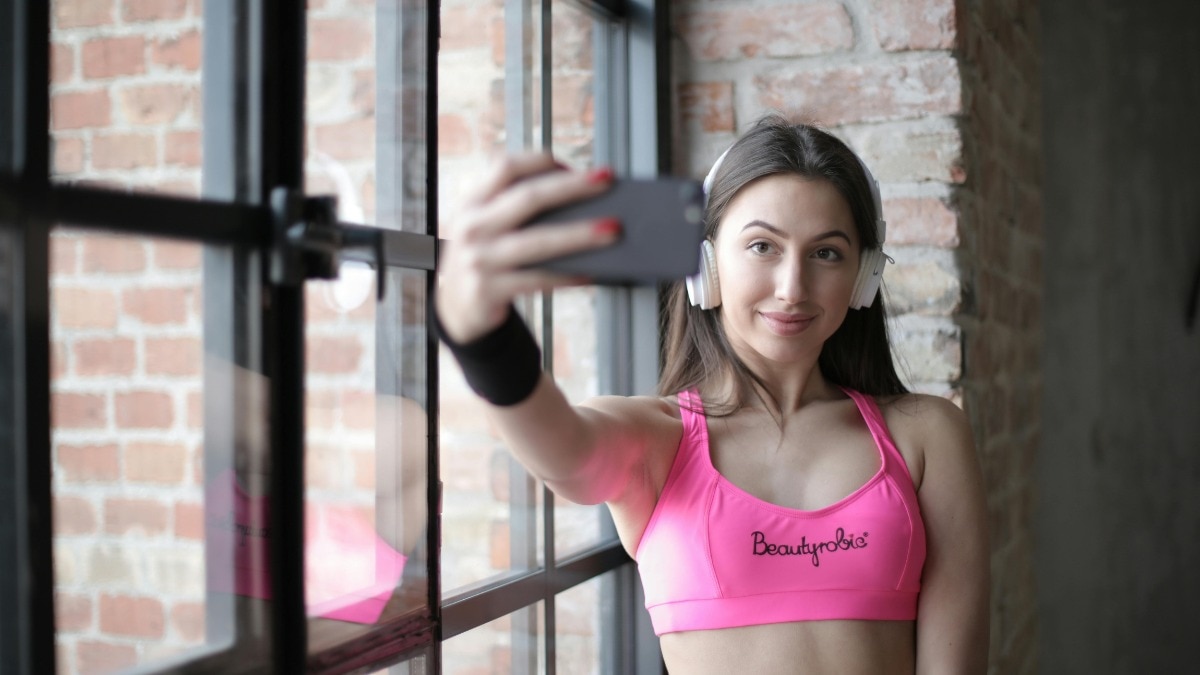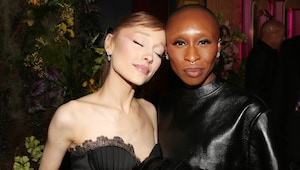How the gym became the internet’s favourite stage
Tripods by the squat rack, filters over sweat—today’s fitness culture is as much about building audiences as it is about building bodies.

In the age of reels and ring lights, the modern gym has transformed. What was once a space of quiet self-improvement and sweat-streaked discipline has evolved into something shinier, more public—a hybrid of fitness studio and social stage. The squat rack is now a tripod stand. Mirrors are for more than form checks. And strength training doubles as content creation.
“In this new era of hyper-visibility, the gym isn't just where you go to transform, it's where you're expected to perform,” says Asad Hussain, founder and chief executive officer of OddsFitness. “Fitness has become performance art where lifting weights is just as much about building content as it is about building muscle.”
Hussain isn’t speaking metaphorically though. Scroll through Instagram, and you’ll find curated clips of high-intensity interval training (HIIT) routines, mirror selfies with motivational captions, and choreographed dances wedged between heavy sets. There’s a new kind of gym-goer—one who’s training for the algorithm as much as for aesthetics or endurance.
When the dumbbells met the DMs
Verhaen Khanna, a fitness enthusiast with over two decades of experience, has witnessed this shift firsthand. “Two decades ago, gyms were sanctuaries of sweat and discipline,” he recalls. “People focused on personal goals, connected with gym buddies, and celebrated milestones like personal records. Mirrors lined the walls for self-reflection, not selfies—camera phones didn’t exist, and the idea of broadcasting your workout was unthinkable.”
Today, Khanna says, smartphones and social media have transformed gyms into performance arenas. “Instagram Stories often feature gym check-ins—treadmill shots, gym outfits, or branded water bottles—that feel more about signalling presence than fitness. These posts garner comments like ‘beast mode’ or ‘looking cute,’ echoing celebrity tabloid culture where every detail, from shoes to meals, is scrutinised. But does everyone need to know you hit the gym today?”
Did it for the 'gram—or the gains?
“Social media has added a new layer to fitness culture,” Hussain explains. “For many, it’s still about health, discipline, and progress, but now there’s also an opportunity to share that journey more publicly.” Platforms have given people a way to connect with broader fitness communities and express pride in their hard work. “That said, this visibility can shift the purpose from personal development to public validation, which changes the dynamic for some gym-goers.”
It’s a tension gym operators now have to navigate daily: personal accountability versus performative content.
Flexing isn’t always fitness
Khanna acknowledges that posting workouts can be motivating—both for the person sharing and for those watching. “If posting motivates someone to stay consistent, that’s a win,” he says. “But it also risks fuelling vanity or unhealthy behaviours. The pressure to look a certain way—often amplified by influencers—can push people toward extreme diets, supplements, or even steroids, chasing an unsustainable ideal.”
He’s seen it lead to insecurity and disordered habits. “When those crutches fade, the body changes, sometimes leading to disappointment. I’ve seen people resort to unhealthy measures like starvation or cosmetic surgery to mimic the ‘perfect’ bodies they see online.”
Personally, Khanna prefers a more grounded approach. “No protein shakes, just a balanced vegetarian diet that meets my needs. My routine flows with life—from weightlifting to nature walks. I rarely post, though I’ve shared the occasional flexing pic with someone special or marked a personal record online, maybe once a year. It’s less about showing off and more about journaling my journey—though who’s to say where the line is?”
Phones, filters, and free weights
Mayara Neeraj Sharma, director of MultiFit, one of India’s fastest-growing fitness chains, echoes the sentiment around smartphones becoming near-essential gym accessories.
“We’ve seen smartphones become almost as common as dumbbells in the gym,” Sharma says. “Members love documenting their workouts, sharing PRs, or capturing community events. While this has helped amplify our ‘happiest fitness community’ vibe online, it’s also made us more mindful about maintaining the right gym etiquette—making sure the focus stays on training and not just filming.”
Designing for the ’gram
The cultural shift has had architectural, operational, and even psychological ripple effects.
“We’ve adapted by creating more open, versatile training spaces with aesthetic setups, improved lighting, and visually engaging corners that suit both functional training and content creation,” Sharma says. “Our marketing now often includes collabs with influencers who align with our ethos—real, energetic, and community-driven. Even our staff understands how to work around a camera without compromising safety or service.”
In the frame—or in the way
But not everyone’s on board with the performance-first mindset. “Filming is fine,” says Khanna, “but it shouldn’t disrupt others. I’ve seen people hog equipment or space to get the perfect shot, leaving others waiting, or accidentally record someone who didn’t consent. That’s where the unspoken code of respect comes in.”
Hussain agrees: “Gyms are communal spaces, and that means respecting the experience of everyone there. Filming workouts is becoming more common, but it’s important to be mindful of who’s in the frame and whether they’re comfortable being part of your content.” He points to a recent survey that found 49% of people support banning cameras in gyms, while 1 in 4 say they’ve skipped workouts altogether just to avoid being filmed.
To address the issue, Sharma has introduced “content-friendly zones and timing guidelines in our gym. Because the gym floor is a shared space. Our coaches and community managers are trained to gently intervene when content creation starts disrupting others’ workouts.”
Scrolling vs self-worth
And then there’s the psychological toll. Social media’s double-edged sword—community on one side, comparison on the other—plays out viscerally in the gym.
“There’s research showing that frequent exposure to idealised fitness content can affect how people view their own bodies, often setting unrealistic expectations,” says Hussain. “But on the flip side, positive feedback can boost confidence and reinforce good habits. It really depends on the individual. Social media can be a supportive tool or a source of pressure, and the key is staying grounded in your personal goals, not someone else’s highlight reel.”
Progress over perfection
For younger members, especially, Sharma says the pressure to “look the part” can be damaging. “That's why our programs and community events are designed to uplift—focusing on strength, stamina, and smiles, not just selfies. We also host open conversations around mental health and body positivity to keep the culture grounded.”
Khanna adds, “Ultimately, the gym is about becoming the best version of yourself, not performing for strangers’ validation. While some thrive on the attention, I wonder if we’re outsourcing our happiness to likes and comments. Fitness should be personal—camera or no camera. Some exercise is always better than none.”
The soul still sweats
And while the gym has undoubtedly joined the ranks of performative spaces—where effort and image are often intertwined—both Hussain and Sharma believe its soul is not lost.
“The landscape has shifted—no doubt,” Sharma says. "Yes, there’s some performance involved now, but we treat it as a way to celebrate progress—not to replace it.”
Hussain agrees: “If you're training for likes instead of longevity, you may be missing the point. But if content creation helps you show up, stay consistent, and feel proud—that can be powerful. Just don’t forget that strength isn’t always visible on camera.”
Lead image: Pexels
Also read: Creative lies to get rid of creepy guys at clubs when “no” just isn’t enough
Also read: 10 moody rainy-day thrillers to curl up with this July
more from Life

Why 'Heated Rivalry' has everyone hot, bothered, and obsessed

Regal revivals, fashion shake-ups, and everything new we’re obsessing over this month

When is the new season of 'Euphoria' out? Plus 5 things we know about it

How Aldo became one of the hottest footwear and accessories brands in India

Four photographers on why a good photograph is more than just a good camera

Why writers are side-eyeing ChatGPT (even as they keep using it)

Which 2025 pop culture moment are you?

Have you found true love this cuffing season or are you just “winter coating” for the holidays?

The Cosmo-approved holiday beauty list to help you glow through party season

Why your best friend might be the most stable relationship you’ll ever have
